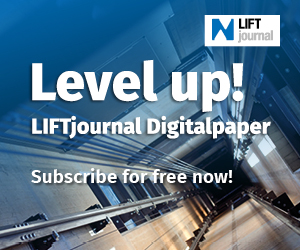The comeback of the hydraulic lift
Many had already written it off. But with the MOD-HY modernisation package from New Lift, hydraulic lifts are experiencing a renaissance.
Suddenly, they are again a step ahead in the competition with cable lifts. And do so both economically as well as ecologically. Once, they were the embodiment of reliability. The decades-long boom in lift construction would not have been possible without hydraulic technology. But in times of skyrocketing energy prices, their image suffered considerably.
Practically overnight, the hydraulic lift was considered to be a power guzzler which, moreover, was operated with unpleasant smelling oil. And while one was at it, there were also complaints about drive comfort and stopping accuracy. Hydraulic lifts – so it seemed – would eventually be replaced with cable lifts.
Hydraulic technology in the 21st century
A false conclusion! Massive investments have been made in recent years in research and development. As a result, hydraulic technology has experienced an innovation boost. Modernisation packets that systematically eradicate the weak points of existing hydraulic lifts are the result. These now travel much more comfortably, stop more precisely and consume significantly less energy.
There was just one bit of bad news: Up to now, such a modernisation has been associated with high costs. The required conversion to a frequency control required not only components such as frequency inverter, flow meter, pressure or temperature sensors to be integrated in the existing lift technology, but the entire hydraulic unit had to be replaced as well. The latter drove up the price and, thus, the amortization time.
Economical renovation instead of expensive replacement
Those days are over! Working in close collaboration with Ziehl-Abegg SE, engineers from New Lift have developed the MOD-HY modernisation package. What makes it revolutionary: Thanks to MOD-HY, the existing drive unit can still be used; unlike in the past, it no longer needs to be replaced. Furthermore, neither sensors nor encoders need to be installed, let alone the creation of additional interfaces on the valve block. The procurement and installation costs drop rapidly.
And what does the bill look like if the hydraulic lift is replaced with a cable lift? The MOD-HY effortlessly stands up to this comparison as well. A complete replacement would exceed any time and cost budget. The dismantling and disposal of the tonnes of steel alone would necessitate a long downtime period and would be more expensive than a complete modernisation package. Not to mention the devastating environmental balance.
Future-proof investment
A renovated hydraulic lift, on the other hand, leaves only a soft ecological footprint. Furthermore, it is quickly amortised and remains an economical means of transport for the long term. The components have a very long service life and can easily be replaced with economical replacement parts in only a few steps. This keeps maintenance costs low.
This bundle of economical, energetic and ecological advantages ensures that the renovation of hydraulic lifts is a worthwhile investment. With the modernisation package, a proven, efficient technology turns out to be trendsetting.
How it works…
Figure 1 (left) shows the technical processes: The upward drive, which was previously a power guzzler, is now frequency-controlled and contractor-free with ZAdyn4CA HY from Ziehl-Abegg – and saves power as a result. The downward drive is still performed electromechanically. The FST-2XT control system is equipped with a pseudo-closed-loop process developed in-house with DCP04 and a modern absolute encoder shaft positioning system. The DCP04 interface between FST-2XT and ZAdyn4CA HY enables direct approach on the floor without crawl distance and mislevelling. Braking resistance becomes a thing of the past. Optimum drive comfort is thereby ensured.
And the ecological balance is acceptable. During the upward drive, excess oil is no longer pumped back into the oil tank via the bypass valve. This is because the hydraulic pump is regulated only to the speed necessary for the required car speed. This frequency-controlled operation also keeps the oil from warming up. Power-consuming oil-cooling systems are thereby eliminated. But there's more: In the acceleration and deceleration phase, only half the pump current is needed. As a result, the modernised hydraulic lift operates much more energy-efficiently. Also eliminated is the noise created by motor contactors.
Moreover, the viscosity of the oil no longer influences the car speed. By means of a tuning function, the software of the ZAdyn4CA HY automatically determines during commissioning the difference between static and dynamic friction and the offset speed necessary for correction during starting and stopping. Complex adjustment work is completely eliminated.
www.newlift.de






















Write a comment